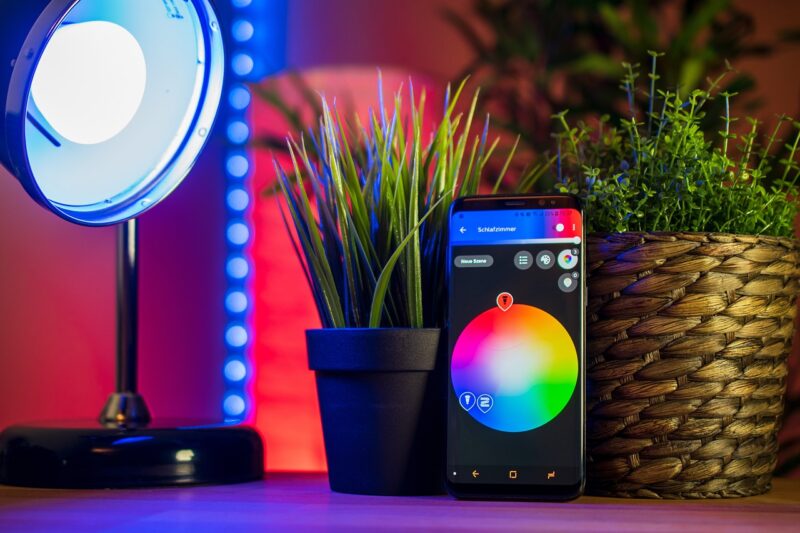What It’s Like Living in a ‘Smart Home’ and Why It Might Not Be So Smart
November 10, 2024

In recent years, the concept of a ‘smart home’ has transcended from science fiction to an everyday reality for many homeowners. Imagine walking into your home, and with a simple voice command, you can dim the lights, adjust the thermostat, lock the doors, and even start a pot of coffee. While these technological advancements promise convenience, efficiency, and security, life in a smart home can also raise various concerns and challenges.
In this article, we will dive deep into the realities of living in a smart home, exploring both the benefits and the drawbacks to help you decide whether this modern living style is right for you.
1. What is a Smart Home?
A smart home is equipped with devices that allow remote management and monitoring of systems within the home—lighting, heating, security, and entertainment systems, to name a few. Through smartphones, tablets, or voice assistants, homeowners can control these systems seamlessly. Key elements of a smart home include:
- Smart Lighting: Lights that can be controlled remotely through apps or voice commands, allowing you to save energy and personalize your home ambiance.
- Smart Thermostats: Devices that learn your heating and cooling habits to optimize energy consumption, resulting in lower utility bills.
- Home Security Systems: Smart cameras, doorbells, and alarms that monitor your property and provide real-time alerts on any suspicious activities.
- Smart Appliances: Refrigerators, ovens, and washers that can be controlled via smartphone apps, ensuring efficiency and automation.
While these technologies promise to enhance your living experience, the implementation of a smart home is more complex than one may think.
2. Benefits of Living in a Smart Home
Living in a smart home comes with numerous benefits that can significantly enhance daily life and offer unparalleled convenience:
- Convenience: Imagine being able to adjust every aspect of your home environment simply by using your voice or smartphone app. This level of accessibility can cater to your lifestyle better than traditional systems ever could.
- Energy Efficiency: Smart devices often come with features designed to reduce energy consumption, pressuring homeowners to be more conscientious about their usage. This can lead to lower utility bills and a positive impact on the environment.
- Enhanced Security: Integrated security systems enable homeowners to monitor their homes remotely, providing peace of mind when away. Features such as automated door locks and real-time alerts improve home safety substantially.
- Customization: Smart homes allow you to tailor your living environment to your personal preferences through adjustable lighting, temperature settings, and smarter organization of spaces based on your habits.
These futuristic benefits paint a promising picture, attracting many people to make the leap into smart living. However, it’s essential to consider what lies behind the allure.
3. The Downsides of Smart Home Living
Despite the numerous advantages, there are potential drawbacks and concerns that may overshadow the benefits of living in a smart home:
- Privacy Concerns: Smart devices often collect data on your habits and routines, leading to potential privacy risks. Hackers can gain unauthorized access to your devices, jeopardizing personal safety and privacy.
- Complexity and Compatibility Issues: With the vast array of devices available, compatibility issues may arise. Not all devices work seamlessly with each other, which can lead to frustration upon setup or usage.
- Dependency on Technology: A significant disadvantage is over-dependence on technology. An unexpected outage, software glitch, or device failure could disrupt your home’s functionality, leaving you feeling helpless in certain situations.
- Initial Cost Investment: Setting up a smart home requires significant upfront investment on hardware and installation, often deterring many homeowners from fully committing to the transition initially.
These challenges highlight the need for a well-rounded understanding of smart home technology before taking the plunge.
4. Real-Life Experiences of Smart Home Dwellers
To understand what it’s genuinely like to live in a smart home, we spoke to several homeowners about their personal experiences.
Case Study 1: The Smith Family
The Smiths installed smart lighting, thermostats, and a security system in their home. While they love the convenience, they expressed concerns over privacy. “It’s unsettling to think that data collection is part of our everyday lives now, especially with smart cameras watching around the clock. We like the security aspect, but we’re cautious about how much we’re putting out there,” they admitted.
Case Study 2: Mark, a Tech Enthusiast
As a tech-savvy individual, Mark has transformed his entire apartment into a smart haven, integrating devices that cater to every detail of his daily routine. However, he shared that occasional glitches during updates or connectivity issues can disrupt his day significantly. “I love how my smart home anticipates my needs, but when something doesn’t work, it can ruin my whole mood,” he stated.
These testimonials reveal that while smart homes offer exceptional amenities, personal experiences can vary significantly based on individual preferences and lifestyle.
5. Making the Right Choice: Is a Smart Home for You?
So, what’s the verdict on whether you should dive into the world of smart homes? The answer depends on your lifestyle, comfort with technology, and personal values. Here are some considerations to help you make that decision:
- Evaluate Your Needs: Consider what features are essential for your lifestyle. If convenience and security are your top priorities, a smart home might be worth the investment.
- Consider Your Privacy: If data privacy is a concern for you, weigh the pros and cons carefully before adopting technologies that collect personal data.
- Research and Plan: Conduct thorough research on compatible devices, trends in smart home technologies, and the initial costs. Carefully planning your setup can help mitigate compatibility issues and maximize your investment.
Ultimately, whether to create a smart home is a personal choice rooted in your lifestyle preferences and values. If done right, a smart home can elevate your living experience, but ignorance towards its drawbacks could lead to unforeseen complications.
Conclusion
To conclude, living in a smart home has its perks and pitfalls. The excitement of controlling your home with a simple command is alluring, but it comes with a cost to privacy, potential technical issues, and the challenge of managing complex systems. As you navigate the smart home landscape, keep in mind that the ultimate goal should be an enhancement of your living experience, not technological overwhelm.
Before making the shift to a smart home, take the time to assess your lifestyle needs, preferences, and potential risks. A well-informed decision will enable you to enjoy the conveniences of smart living while minimizing its disadvantages.
After all, in a world where technology continues to evolve rapidly, your home should be a sanctuary, not another source of stress.








